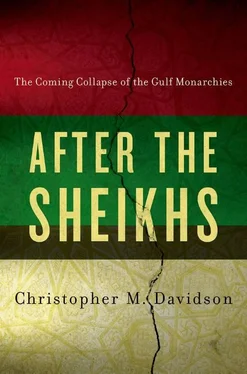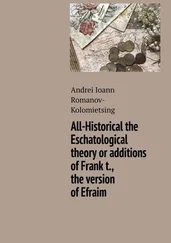In Kuwait, over 12,000 nationals are believed to be waiting for public sector positions, preferring to remain unemployed in the meantime rather than work in the private sector. [511] 50. Reuters, 21 October 2010.
Bahrain and Oman have suffered much less, but in part this is due to the increase in real unemployment in these states, as discussed later in this chapter. Moreover, there have been some relatively novel labour nationalisation schemes in these countries which have had some success, albeit still quite limited. In 2009, for example, Bahrain increased the charge on visas for foreign workers in an effort to make Bahraini workers more attractive to employers. In the end, however, too many businesses lobbied to protect the status quo and the visa charge was only raised to $27—which was deemed merely a minor obstacle to hiring expatriates. In Oman, the government has required taxi drivers and hotel reception workers to be nationals since the 1980s. This gives visitors to the country the impression that Oman’s labour force is far more nationalised than in the other Gulf monarchies. Nevertheless it is still a narrow example.
Apart from the long term economic consequences of having almost no nationals engaged in the public sector, with many remaining unemployed, and in receipt of (often generous) social security benefits, there are also growing symptoms of the social and political problems in store for the Gulf monarchies. In summer 2010, for example, several hundred frustrated Saudi national university graduates reportedly gathered outside the Ministry for Education carrying posters demanding government jobs and carrying posters with slogans such as ‘Enough Injustice’. [512] 51. Reuters, 29 August 2010.
The problem is also increasingly being linked to terrorism and security concerns, with some analysts remarking that ‘…the Saudi government believes that the question of unemployment is a major problem with huge implications on security… and the great majority of those recruited for terrorist activities are the unemployed’. [513] 52. Ibid.
Crime rates among Gulf nationals have also soared over the past few decades — mostly connected to acts of delinquency such as joyriding and shoplifting. Although official statistics are unavailable, given the sensitivities prevalent in conservative societies, alcohol and drug abuse have risen dramatically among the indigenous populations, despite the harsh penalties associated with narcotics. Most Gulf monarchies now have extensive rehabilitation centres. In Dubai, for example, the emirate’s Training and Rehabilitation Centre — available only to nationals — has been described by the New York Times as ‘a lush facility complete with swimming, art classes and a gym, deep in the desert’. In Saudi Arabia there are now television programmes that openly discuss drug abuse, while in Bahrain and Kuwait clerics increasingly preach about the dangers of narcotics. As a representative of Mentor Arabia — an organisation that aims to help regional governments formulate anti-drug policies — has claimed ‘the taboo around drug addiction is fading because the problem is becoming too scary’ and that ‘there are many indicators that suggest this is going to be a big problem… what shows it is that the governments are beginning to ask for help’. Meanwhile, a former UAE national drug user has explained that ‘…the drug problem here is really an invasion… there is money, the place is open, so it’s bound to happen here’. [514] 53. New York Times , 5 May 2006.
Although a pathology resulting from the opacity of politics in the Gulf monarchies rather than a side effect of the distributive economy, the massive squandering of national resources — sometimes to benefit ruling family members — is arguably just as damaging for these countries. For many years the most visible example of the problem was the ‘copycat spending’ of competing monarchies, as each seemed to try to out-do the other by buying or constructing better versions of the same, often prestigious article or totemic building. In many cases this led to a noticeable duplication of high profile investments in the region, usually with little cooperation between neighbours and with minimal regard for long term planning. Nowhere is this more obvious than in the air, as in addition to having at least one international airport, each Gulf monarchy now also has at least one international airline, despite the relatively small populations of these countries. Jointly owned by the UAE (specifically Abu Dhabi), Bahrain, Qatar, and Oman, Gulf Air was originally intended to be the principal carrier for these countries, before Dubai established Emirates Airlines, Qatar established Qatar Airways, Oman established Oman Air, and — eventually — Abu Dhabi established Etihad Airways. Today, therefore, Gulf Air is effectively the national carrier only of Bahrain, with its aeronautical siblings competing with each other along with other established Gulf carriers such as Kuwait Airways and Saudi Arabia Airlines. There are countless other examples, most of which connected to soft power strategies or diversification efforts, including the monarchies competing to acquire European football clubs and scrambling to host the most spectacular Formula One Grand Prix. Both Bahrain and Abu Dhabi now stage such events, despite their very close proximity, and back in 1981 Dubai held an unofficial ‘Dubai Grand Prix’—the posters for which displayed the face of the emirate’s ruler [515] 54. Rashid bin Said Al-Maktoum.
more prominently than any driver or car.
There has also been fierce competition between the Gulf monarchies to build taller skyscrapers than each other. Almost as soon as Dubai’s 828 metre Burj Khalifa was completed in early 2010, Saudi Arabia’s Al-Waleed bin Talal Al-Saud announced that he had signed a $1.2 billion contract to build a 1 kilometre tall tower outside Jeddah. Intended as the centrepiece for his new model town — Kingdom City — and due to be completed by 2016, Alwaleed claimed that ‘…building this tower in Jeddah sends a financial and economic message that should not be ignored… It has a political depth to it to tell the world that we Saudis invest in our country despite what is happening around us from events, turmoil and revolutions even’. [516] 55. MSNBC , 2 August 2011.
Given the existence of seven ruling families in the UAE, the federation provides a particularly good micro-level case study of such duplicated investments and unnecessary projects. Even in the mid-1970s the UAE’s minister for planning [517] 56. Said Ahmad Ghubash.
was already complaining of the problem, explaining that ‘…economic necessity will require the eventual cessation of the costly duplications of projects that have occurred throughout the UAE since it was established’. He also claimed that ‘officials recognise that this duplication of projects only wastes time and money that could be used more effectively elsewhere. The intense rivalry between the various emirates and the important status issue dictates that if one emirate acquires an airport or factory then a similar one has to be built in the other emirates’. [518] 57. Overton, J. L., ‘Stability and Change: Inter-Arab Politics in the Arabian Peninsula and the Gulf’ (unpublished PhD thesis. University of Maryland, 1983), p. 184. Taken from Overton’s interview with Said Ahmad Ghubash in Abu Dhabi in 1976.
Writing in the mid-1980s, a Western observer also emphasised this lack of co-ordination and the resulting unnecessary duplications in the UAE, stating that ‘Abu Dhabi, Dubai, Sharjah, and Ra’s al-Khaimah all have airports that service both international and domestic flights. This overbuilding, prompted by inter-emirate rivalry, has left the latter two facilities under-utilised. Abu Dhabi, on the one hand, recently opened a new, large civilian airport to handle its traffic. Dubai, with the busiest airport in the Gulf, is upgrading its facilities…’ [519] 58. Peck, Malcolm, The United Arab Emirates: A Venture in Unity (Boulder: Westview, 1986), p. 100.
Читать дальше












